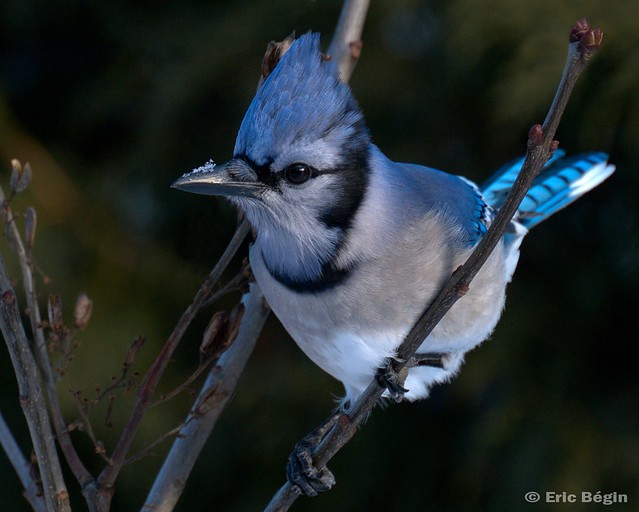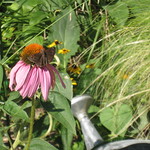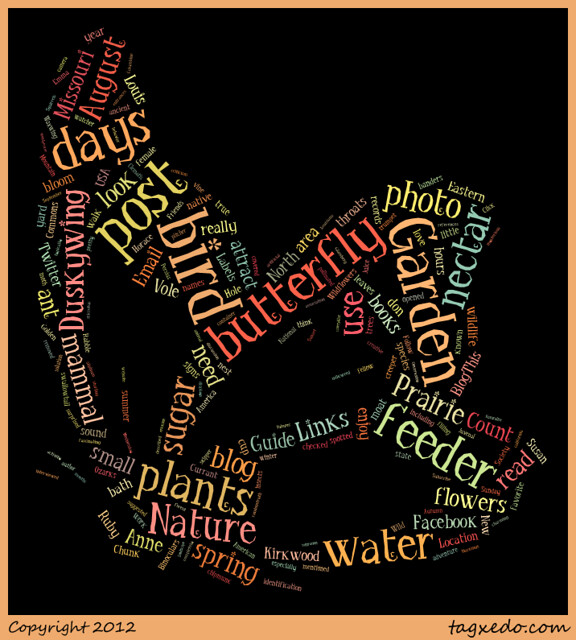I love birding, but I
hate checklists. It just takes too long to find the bird in the list. Does
anyone else feel that studying field marks is way more interesting than memorizing taxonomic
order?
Ahh, but now there’s an app for that-- the FieldSurvey
app. Imagine doing your Breeding Bird Survey, then
submitting the data on your iPhone or iPad before you head home. Just such an
app has been developed by birder David Rabenau of Stray Dog Software. It’s available in the App Store for iPhone,
iPad, and iPod Touch for $1.99.
FieldSurvey
allows you to quickly enter each species and the number of individuals seen. Global positioning records the location where you enter the data. When
you're finished, it's easy to email the list or export it to bird
listing sites.
The design is simple and elegant. Begin by creating
the name of your survey. You can add notes including hours in the field,
weather conditions, etc. The GPS function puts a pin in the map at the point
where you click to add a species to your list. Each time you click, another pin
is added so that when the survey is completed, you'll see accurate representation
on a map. It’s interesting to see clusters of birds and lone birds on your
route.
Now,
enter the birds seen. You can type in the name of each species you see, or if
you prefer, you can use the standard four-letter abbreviation for each. The flexibility to create your own list means that
this app can be used for any kind of inventory. It’s easy to create your own
list as you go, but recent updates offer preloaded lists of North American
birds, dragonflies, and butterflies—in-app purchase, $0.99. FieldSurvey
can be used for sruveys of insect or plants, bio-blitzes and, of course,
Christmas Bird Counts!
I’ve
tested this out around my neighborhood, but last weekend I wanted to try out my newly purchased bird list, so I headed for
one of the best areas for land birds around here, Busch Wildlife area, in St. Charles County, Missouri.
When you touch
the number next to the name of the bird, the phone vibrates, letting you know
that you successfully counted one of the selected bird. This simple feature is
actually a big help, because you've got a lot to handle when you're walking
through the holding phone, binoculars, and a leash with a young and
rambunctious dog on the other end. If you come upon a flock of thousands of
Snow Geese, just tap to pop up a box to and enter the number in the count
field.
The list of birds
of North America, of course, is huge. I thought this might a bit too much like
a checklist. However, the Field Survey list is in alphabetical
order—and I already learned my alphabet. On the right of the screen letters
appear. It was easy to tap “C,” and swipe through to “Caroline Wren.”
Having
a gadget to list the birds is nice, but if you had to then transfer it to some
other form for record keeping—well, you might as use a checklist.
When I finished my list, I tapped the “send” icon at the bottom, and selected
“Export & Email” in the eBird Record format. Once I signed in to my eBird account, I chose “import,” and
uploaded my file. There was no need to convert or adjust—my whole list,
including locations, was completed in less time than it took to log in. You
can also choose to your list to export to Eremaea, or as a CSV file (can be
opened with MS Excel), as a .kml file (used by Google Earth) or .gpx, or email
it to yourself.
Thanks to Eric Bégin for his outstanding photo of a handsome Blue Jay, licensed with Creative Commons.










